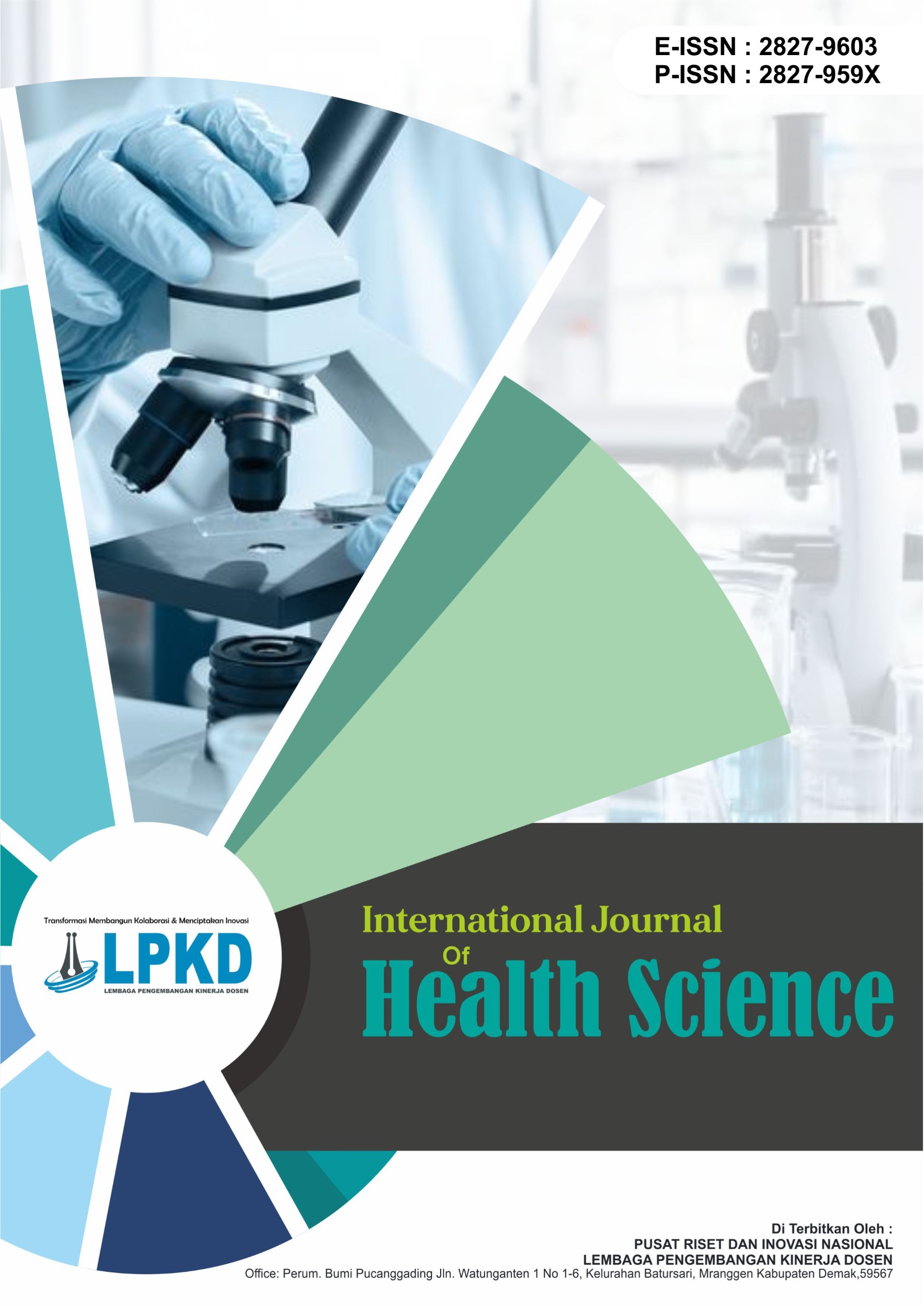The Relationship Between the Frequency of Infant Massage and the Increase in Body Weight of Infants Aged 6–18 Months at Ralla Community Health Center, Barru Regency
DOI:
https://doi.org/10.55606/ijhs.v5i3.6043Keywords:
Body Weight Increase, Growth and Development, Infant Development, Infant Massage, Low Birth Weight (LBW)Abstract
Infant growth and development can be monitored through anthropometric measurements, particularly body weight. Infants with low birth weight (LBW) (< 2500 grams) are at risk of growth disorders. One form of stimulation that can promote infant weight gain is infant massage. This study aimed to determine the relationship between the frequency of infant massage and the increase in body weight of infants aged 6–18 months at Ralla Community Health Center, Barru Regency. This was a quantitative study with a retrospective design. Resulting in 27 infant respondents. The results showed that most respondents received infant massage frequently (88.9%), and 24 infants experienced weight gain (88.9%). Fisher’s Exact test yielded a p-value of 0.000 (p < 0.05), indicating a significant relationship between the frequency of infant massage and the increase in body weight of infants aged 6–18 months at Ralla Community Health Center. This study recommends that parents routinely practice infant massage to optimize infant growth and development, and encourages further research on other factors influencing infant body weight.
Downloads
References
BPS, BKKBN, Kemenkes RI, & ICF. (2020). Survei Demografi dan Kesehatan Indonesia (SDKI) 2019. Jakarta: BPS.
Field, T. (2010). Touch for socioemotional and physical well-being: A review. Developmental Review, 30(4), 367–383. https://doi.org/10.1016/j.dr.2011.01.001
Field, T. (2014). Massage therapy research review. Complementary Therapies in Clinical Practice, 20(4), 224–229. https://doi.org/10.1016/j.ctcp.2014.07.002
Gilasi, H. R., Tavasoli, E., & Mirshamsi, M. (2020). The effect of infant massage on growth and development: A systematic review. Journal of Pediatric Nursing, 50, e1–e8.
Kementerian Kesehatan Republik Indonesia. (2019). Profil Kesehatan Indonesia 2019. Jakarta: Kemenkes RI.
Kementerian Kesehatan Republik Indonesia. (2021). Pedoman Stimulasi, Deteksi, dan Intervensi Dini Tumbuh Kembang Anak. Jakarta: Kemenkes RI.
Marni. (2019). Pijat Bayi untuk Stimulasi Tumbuh Kembang Anak. Jakarta: EGC.
Roesli, U. (2021). Pedoman Pijat Bayi. Jakarta: Pustaka Bunda.
Safitri, D. (2021). Pijat bayi sebagai stimulasi tumbuh kembang anak. Jurnal Kebidanan dan Kesehatan, 12(1), 25–32.
Sari, M., & Puspitasari, R. (2020). Edukasi pijat bayi untuk meningkatkan keterampilan ibu. Jurnal Promosi Kesehatan, 8(2), 101–108.
Sembiring, A. (2019). Hubungan pemberian MP-ASI dengan status gizi bayi usia 6–24 bulan. Jurnal Gizi dan Kesehatan, 11(2), 45–52.
Shonkoff, J. P., & Phillips, D. A. (2000). From neurons to neighborhoods: The science of early childhood development. Washington DC: National Academy Press.
South Sulawesi Provincial Health Office. (2020). Provincial Health Profile 2020. Makassar: Dinkes Sulsel.
UNICEF. (2020). The State of the World’s Children 2020: Children, food and nutrition. UNICEF.
UNICEF. (2021). Early childhood development: The foundation for a fair start in life. UNICEF.
World Health Organization. (2019). Infant and young child feeding: Key facts. WHO.
World Health Organization. (2020). Improving early childhood development: WHO guideline. Geneva: WHO.
Downloads
Published
How to Cite
Issue
Section
License
Copyright (c) 2025 International Journal Of Health Science

This work is licensed under a Creative Commons Attribution-ShareAlike 4.0 International License.







